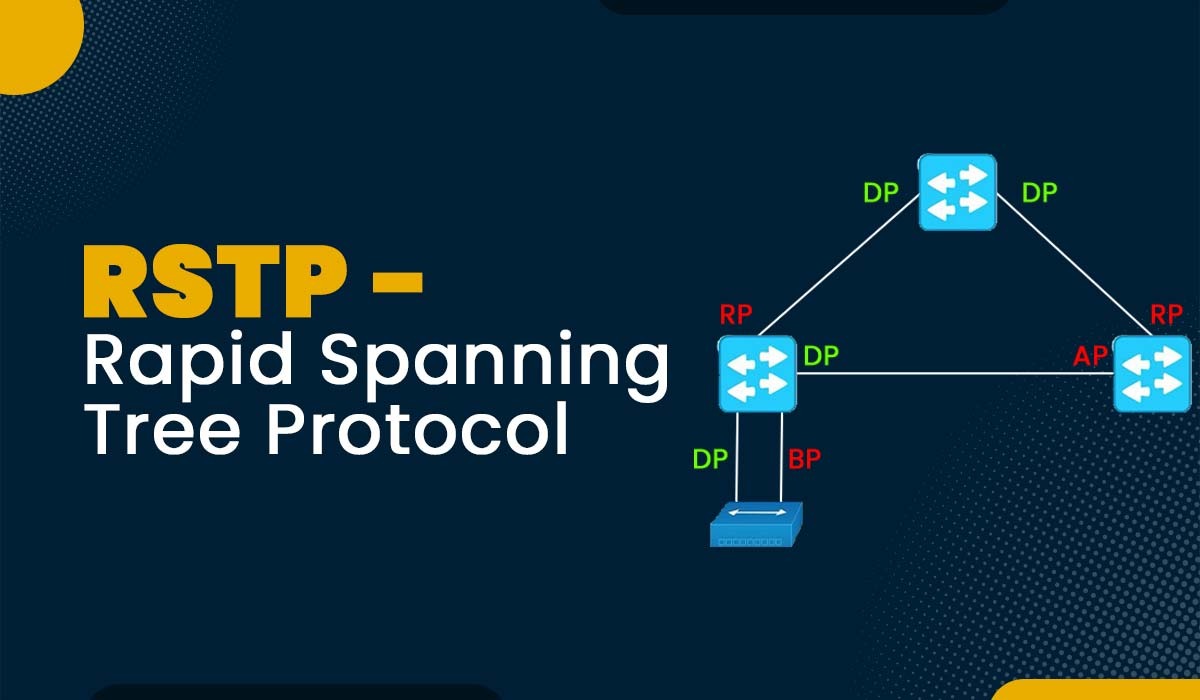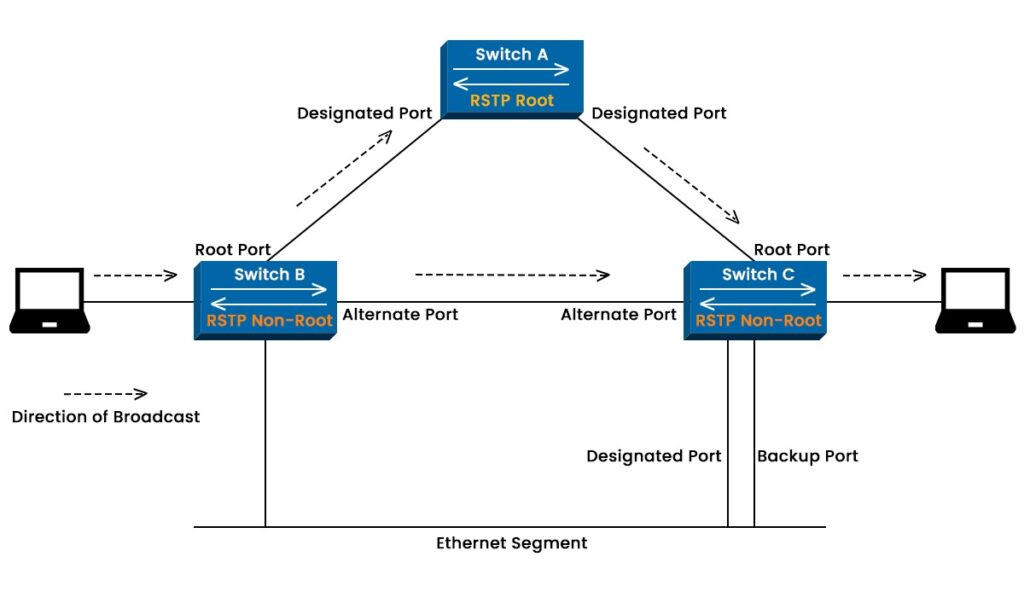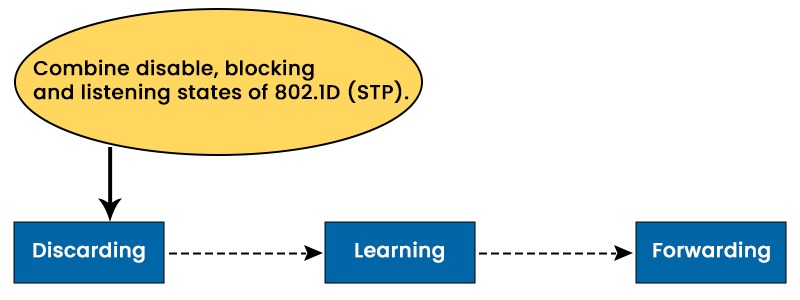RSTP – Rapid Spanning Tree Protocol Explained

One of the challenges of network switching is to avoid loops in the network topology. Loops can cause problems such as broadcast storms, multiple frame copies, and MAC address table instability. To prevent loops, switches use a protocol called Spanning Tree Protocol (STP). STP creates a logical tree structure of the network by blocking some of the redundant links between switches. STP also detects changes in the network topology and adjusts the tree accordingly. STP has some limitations, such as slow convergence time, low bandwidth utilization, and lack of load balancing. A new protocol called Rapid Spanning Tree Protocol (RSTP) was developed in order to overcome these limitations. RSTP protocol is an enhancement of STP that provides faster and more efficient network switching. RSTP stands for Rapid Spanning Tree Protocol. It is an enhanced version of the Spanning Tree Protocol (STP) that enhances the performance of the spanning tree. Similar to STP, the RSTP protocol can generate a single spanning tree (also known as instance 0). As a result, it is not equipped to consider VLANs in its management of redundant paths. The enhancements in the performance of RSTP typically make it a better choice than STP in environments that do not involve VLANs. The 802.1w standard is recognized by the Institute of Electrical and Electronics Engineers (IEEE) as the standard for Rapid Spanning Tree Protocol. RSTP complies with a strict set of guidelines that allows switches to determine the optimal method for forwarding network traffic without any unnecessary redundancy. When it is turned on for a network, the spanning tree algorithm will make all of the necessary decisions automatically about the configuration of the spanning tree. In Rapid Spanning Tree Protocol, the topmost bridge in the network is designated as the Root bridge. Its primary responsibility is to send network topology information to other switches within the network. This plays a critical role in the case of hardware malfunctions or any changes in topology. The optimal alternative routes are established without any delay. RSTP protocol defines four port roles. These are: RSTP assigns different port states to each port on a bridge, depending on its role and status in the network topology. The port states in RSTP are: Note: While the learning state is utilized in Rapid Spanning Tree Protocol, its duration is comparatively short compared to STP. One of the key benefits of using the RSTP over STP is that it reduces the convergence time. In case of any changes in network topology, STP displays convergence time somewhere between 40-50 seconds. In a modern networking environment, there is a high demand for enhanced speed, with a 40-50 seconds latency typically considered unacceptable. In contrast, Rapid Spanning Tree Protocol decreases the time required for convergence, typically to a range of 5 to 10 seconds. Hence, it’s a better option than STP. Here are some other benefits of RSTP Protocol – Here are the disadvantages of Rapid Spanning Tree Protocol – It’s important to consider these disadvantages alongside the benefits of Rapid Spanning Tree Protocol when evaluating its suitability for a particular network environment. The main difference is that RSTP is faster and more efficient than STP, as it can switch to an alternate path without waiting for the network to converge. RSTP is faster than STP because it does not depend on forwarding delay timers. It allows seamless port transitions from discarding to forwarding states, thereby proving advantageous in a dynamic network environment where switches frequently change their roles. RSTP (Rapid Spanning Tree Protocol) is an open standard that defines a network protocol for preventing loops in a bridged LAN. RSTP is defined in IEEE 802.1w and is compatible with legacy STP devices. RSTP stands for rapid spanning tree protocol, a faster version of STP. MSTP stands for multiple spanning tree protocol. It is a modern networking protocol that serves to combine Virtual Local Area Networks (VLANs) into Instances. MSTP is designed to be compatible with both the Spanning Tree Protocol (STP) and the Rapid Spanning Tree Protocol. RSTP protocol provides fast and reliable network switching by preventing loops in a network of switches. It can handle multiple topology changes simultaneously and reduce the convergence time from tens of seconds (in STP) to sub-seconds (in RSTP). Rapid Spanning Tree Protocol is compatible with STP and can interoperate with legacy switches that use STP. You can join CCNA Training Course to learn Rapid Spanning Tree Protocol and STP in detail.Introduction
What is RSTP?
How does RSTP work?
RSTP Port Roles

Port States in RSTP

STP State (802.1d) RSTP State (802.1w) Blocking Discarding Listening Discarding Learning Learning forwarding Forwarding Disabled Discarding Advantages of RSTP
Disadvantages of RSTP
Frequently Asked Questions
Q1 – What is the difference between STP and RSTP?
Q2 – Why is RSTP faster than STP?
Q3 – Is RSTP an open standard?
Q4 – What is RSTP or MSTP?
Conclusion







